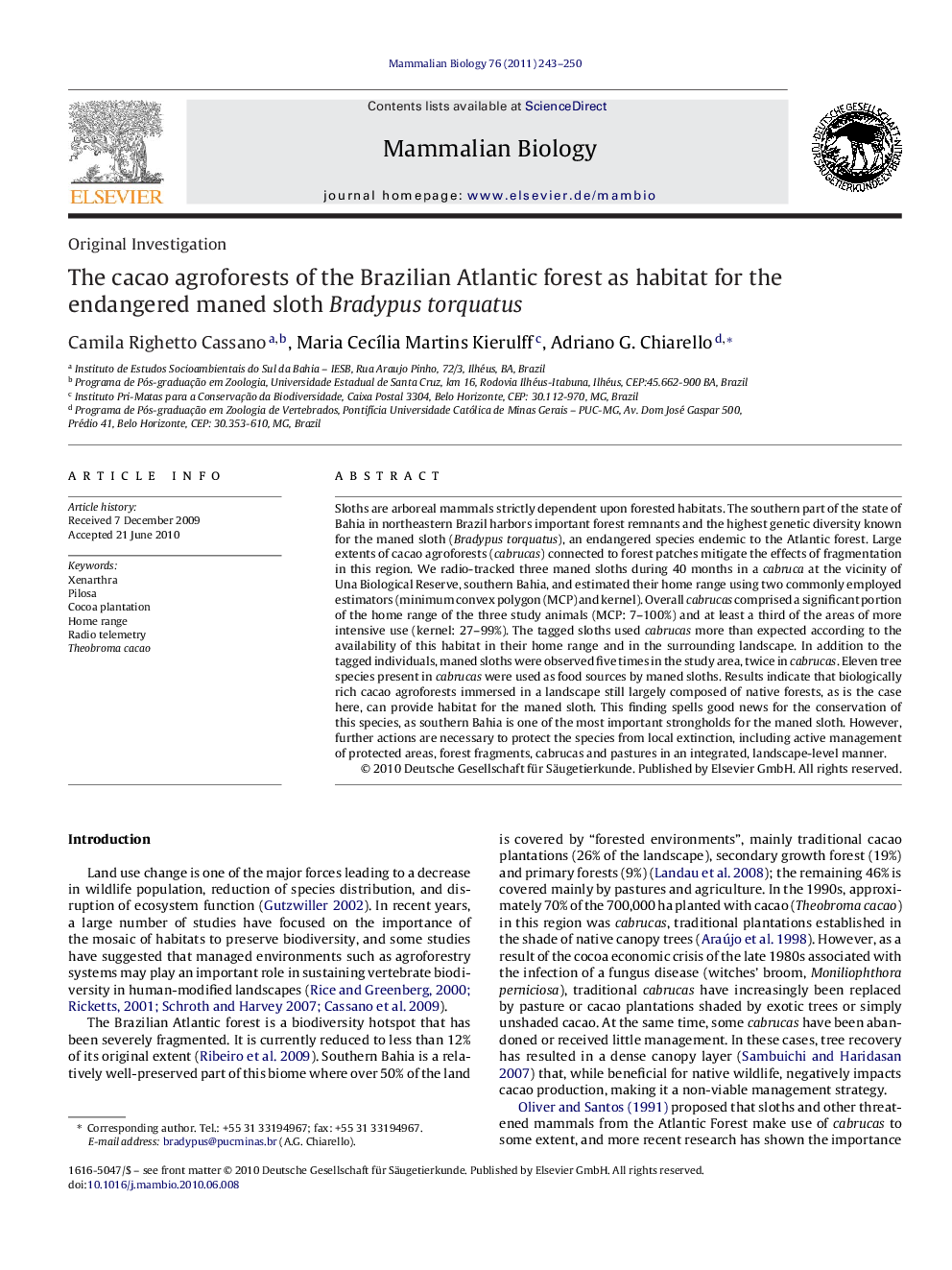| Article ID | Journal | Published Year | Pages | File Type |
|---|---|---|---|---|
| 2193741 | Mammalian Biology - Zeitschrift für Säugetierkunde | 2011 | 8 Pages |
Sloths are arboreal mammals strictly dependent upon forested habitats. The southern part of the state of Bahia in northeastern Brazil harbors important forest remnants and the highest genetic diversity known for the maned sloth (Bradypus torquatus), an endangered species endemic to the Atlantic forest. Large extents of cacao agroforests (cabrucas) connected to forest patches mitigate the effects of fragmentation in this region. We radio-tracked three maned sloths during 40 months in a cabruca at the vicinity of Una Biological Reserve, southern Bahia, and estimated their home range using two commonly employed estimators (minimum convex polygon (MCP) and kernel). Overall cabrucas comprised a significant portion of the home range of the three study animals (MCP: 7–100%) and at least a third of the areas of more intensive use (kernel: 27–99%). The tagged sloths used cabrucas more than expected according to the availability of this habitat in their home range and in the surrounding landscape. In addition to the tagged individuals, maned sloths were observed five times in the study area, twice in cabrucas. Eleven tree species present in cabrucas were used as food sources by maned sloths. Results indicate that biologically rich cacao agroforests immersed in a landscape still largely composed of native forests, as is the case here, can provide habitat for the maned sloth. This finding spells good news for the conservation of this species, as southern Bahia is one of the most important strongholds for the maned sloth. However, further actions are necessary to protect the species from local extinction, including active management of protected areas, forest fragments, cabrucas and pastures in an integrated, landscape-level manner.
